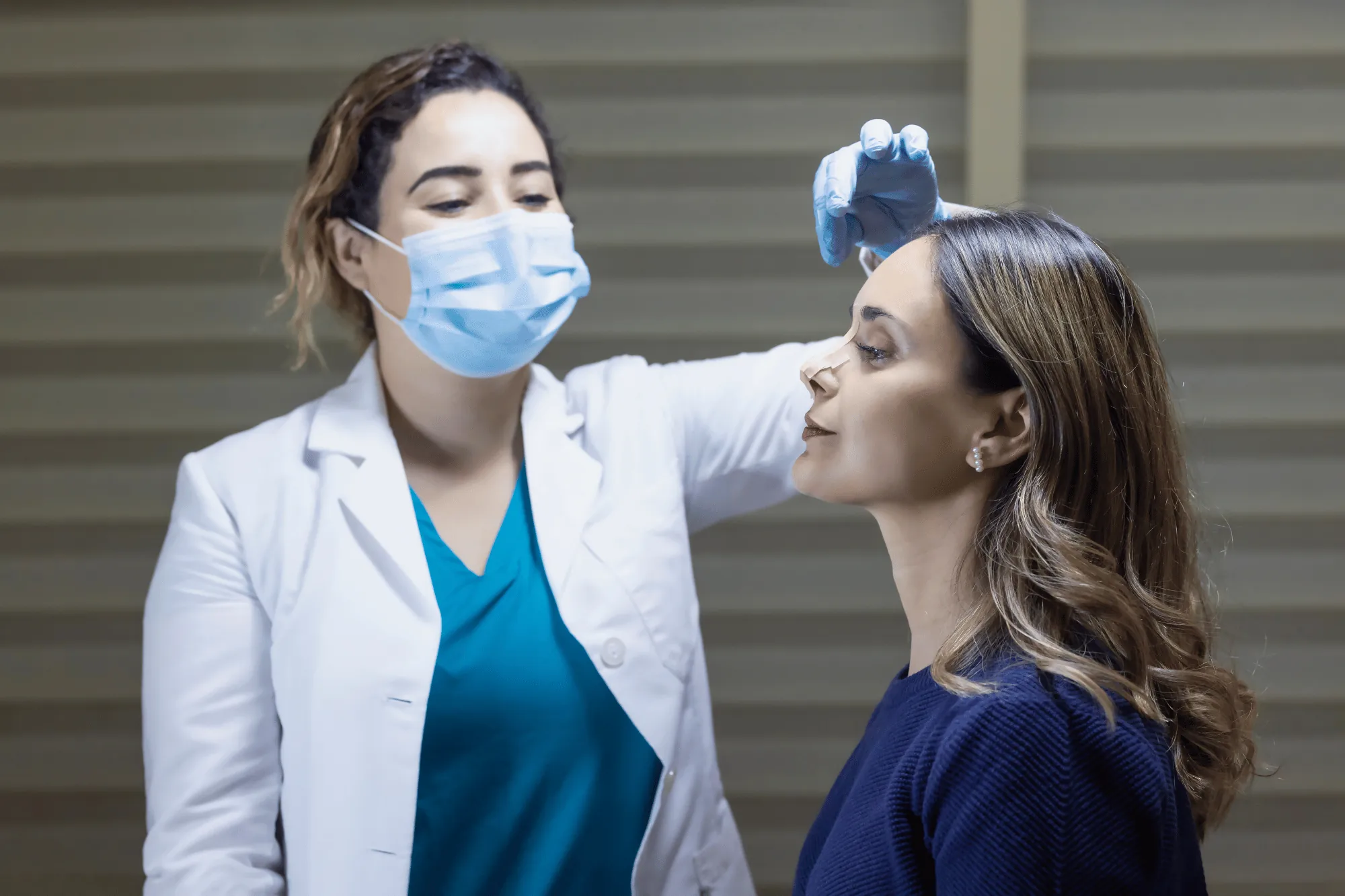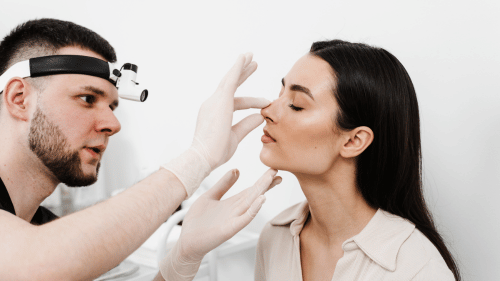Zirconia Crowns
Zirconia crowns are strong, biocompatible dental restorations made from zirconium dioxide, offering durability and a natural tooth-like appearance.
- The Only Guide You’ll Ever Need
Zirconia Crowns
Zirconia crowns are advanced dental restorations used to cover and protect damaged or decayed teeth. Made from zirconium dioxide, a highly durable ceramic material, these crowns offer exceptional strength and resistance to wear. Their natural translucency and tooth-colored appearance make them ideal for restoring both front and back teeth. Zirconia crowns are metal-free, making them a popular choice for patients with metal allergies or aesthetic concerns. They blend seamlessly with natural teeth, restore function, and improve the overall look of a patient’s smile.
The process of getting zirconia crowns typically involves two appointments. During the first visit, the dentist prepares the tooth, takes digital or physical impressions, and places a temporary crown. The final zirconia crown is custom-crafted in a dental lab using precise CAD/CAM technology. At the second visit, the permanent crown is fitted, adjusted, and securely bonded in place. Zirconia crowns offer long-lasting results with proper oral hygiene and routine dental checkups, providing both functional stability and cosmetic appeal.
Purpose
Covers damaged teeth with durable material.
Procedure
Tooth shaved and crown fitted.
Areas Treated
Visible and chewing teeth.
Anesthesia
Local anesthesia if needed.
Recovery
Mild sensitivity for a few days.
Results
Strong, natural-looking tooth restoration.
What is Rhinoplasty ?
Rhinoplasty, commonly known as a “nose job,” is a surgical procedure designed to reshape the nose for aesthetic enhancement or functional improvement. It can address concerns like:
A dorsal hump
Drooping or bulbous nasal tip
Crooked bridge
Overall facial imbalance
In many cases, rhinoplasty is also performed to improve nasal breathing, particularly when combined with correction of a deviated septum.
At our clinic, board-certified surgeons take a personalized, detail-oriented approach, analyzing each patient’s facial structure to deliver natural-looking and harmonious results.
Rhinoplasty Process
1. Consultation
Detailed facial and nasal analysis
Discussion of aesthetic goals and functional concerns
Customized surgical plan tailored to your features
2. Surgical Procedure
General anesthesia is typically used
Hidden incisions (inside the nostrils) minimize visible scarring
The nose is reshaped (tip refined, hump reduced, bridge straightened, etc.)
If needed, internal corrections like a septoplasty are performed to enhance breathing
3. Recovery
Surgery duration: 2–3 hours
Outpatient procedure: most patients go home the same day
Swelling and bruising peak in the first week and subside within 1–2 weeks
External splint worn for about a week
Return to light activities and office work: typically within 7–10 days
Final results: refined nasal shape settles within 12 months
Rhinoplasty Cost in 2025 (Turkey)
The experience of the surgeon
The techniques used
Whether functional work (e.g., septoplasty) is also included
Average Cost in Turkey:
Why Turkey?


Overview
What is Zirconia Crowns?
Zirconia crowns are dental caps made from zirconium dioxide, a strong, aesthetic material used to restore and protect damaged teeth. Known for their strength, they are ideal for patients seeking long-lasting and natural-looking results.
The procedure includes:
tooth preparation: reshaping the tooth for crown placement
digital or physical impressions: used to design the custom crown
crown fabrication: the crown is created using CAD/CAM systems
crown bonding: the final crown is cemented securely onto the tooth
Zirconia crowns are durable, biocompatible, and visually similar to natural teeth.
Process
Zirconia Crowns Process
1. Consultation
Dental examination and X-rays
Evaluation of tooth structure and surrounding gum health
Color matching and digital planning for natural aesthetics
Treatment planning based on functional and cosmetic goals
2. Surgical Procedure
Local anesthesia is applied for comfort
The tooth is reshaped to prepare for the crown
Impressions or digital scans are taken
A temporary crown is placed to protect the tooth
The final zirconia crown is fabricated in a dental lab
3. Recovery
Mild sensitivity may occur in the first few days
Patients can resume normal activities immediately
Avoid hard or sticky foods until fully adjusted
Maintain good oral hygiene to ensure longevity
Routine dental checkups help monitor crown health
Costs
Facelift (Rhytidectomy)
The cost of a facelift can vary depending on several factors, including the complexity of the procedure, the surgeon’s experience, and whether additional treatments (such as a neck lift or eyelid surgery) are performed at the same time.
Typical cost range: $7,000 – $15,000
The experience of the surgeon
The techniques used
Whether functional work (e.g., septoplasty) is also included
Average Cost :
Cost Range : $7,000 – $15,000
What’s included:
- Surgeon’s fee
Anesthesia fees
Operating room and facility costs
Pre-operative consultations and post-operative care
Compression garments or necessary supplies
Before & After
Authentic Patients & Genuine Results
Hear It Straight from
Our Patients Real Stories, Real Impact.
Discover what our patients have to say about their transformation journey with us.
Services
Faq's
Frequently Asked Questions
Have questions about zirconia crowns? We’ve answered the most common concerns to help you feel confident and informed before your procedure.
What makes zirconia crowns different from other crowns?
They are metal-free, stronger than porcelain, and highly aesthetic.
Are zirconia crowns safe for people with allergies?
Yes. They are biocompatible and suitable for patients with metal allergies.
How long do zirconia crowns last?
With good care, they can last 10–15 years or longer.
Do zirconia crowns stain or discolor?
No. They are resistant to staining and maintain their color over time.
Can zirconia crowns be used on front teeth?
Yes. Their natural look makes them suitable for both front and back teeth.
Is the procedure painful?
No. It is performed under local anesthesia, and discomfort is minimal.
Will the crown match my other teeth?
Yes. The crown is color-matched to blend seamlessly with your smile.
How long does the procedure take?
Usually two visits: one for preparation and impressions, another for crown placement.
Are zirconia crowns better than metal crowns?
They offer comparable strength with superior aesthetics and no metal visibility.
How should I care for my zirconia crown?
Maintain good oral hygiene and visit your dentist regularly for cleanings and exams.
Claim Your Free Consultation Now!
If you have questions, need support, or are looking for medical guidance, our expert team is ready to assist you.
- Customized Treatment Plan in Minutes!
- Complimentary Consultation and Evaluation
- Round-the-Clock Booking Available
- Everything Included in One Package
- Over 2,800 Clients and Growing in 32+ Countries












